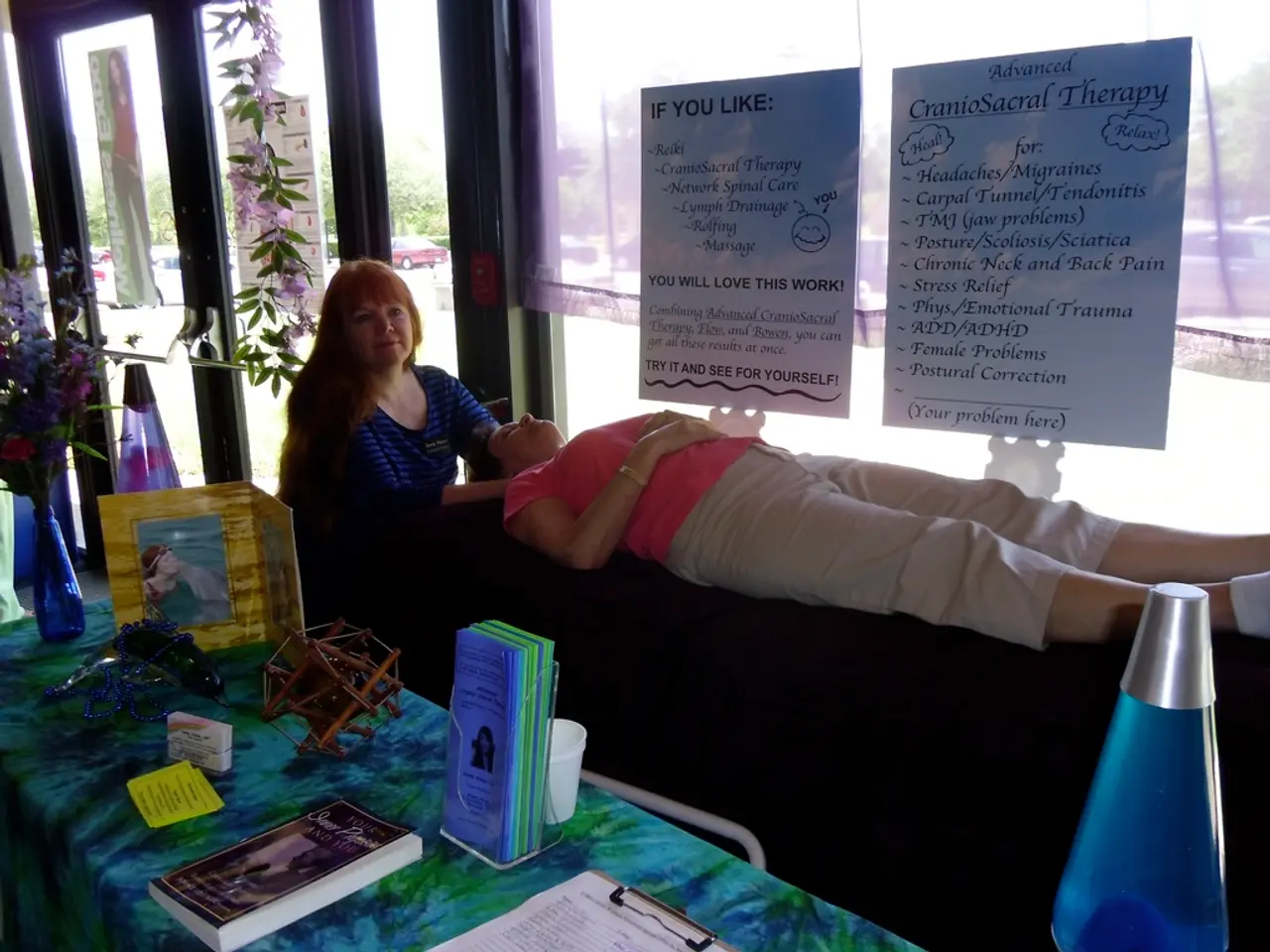Options for Therapy: An Overview of Prevalent Methods
In the realm of mental health, a diverse array of therapies exists to cater to different needs and conditions. Here, we delve into some of the most common and effective approaches.
Cognitive Behavioral Therapy (CBT) is a widely used form of psychotherapy. It is based on the idea that thoughts, feelings, and behaviours are interconnected, and by modifying negative thought patterns, individuals can change their feelings and behaviours.
Psychodynamic therapy, another popular form of talk therapy, aims to increase awareness of unconscious thoughts and feelings and how they shape behaviour. It often works best when paired with more action-oriented therapies, such as CBT.
Mindfulness-based Cognitive Therapy (MBCT) combines elements of CBT and mindfulness practices. It teaches individuals to identify thoughts, observe them without judgment, and accept them, thereby helping to reduce the risk of relapse into depression and potentially aiding in the treatment of bipolar disorder and anxiety disorders.
Dialectical Behavior Therapy (DBT) is a derivative of CBT, focusing on building mindfulness, distress tolerance, interpersonal effectiveness, and emotional regulation. It was originally developed to help people with borderline personality disorder, but its applications extend to treating symptoms of conditions like ADHD or PTSD.
Acceptance and Commitment Therapy (ACT) encourages individuals to accept negative feelings and thoughts while committing to value-based changes.
Brainspotting is a unique therapy that follows the idea that the direction in which you move your eyes can influence your feelings. It may help regulate difficult emotions.
Holistic therapy takes into account the many dimensions of health and well-being, encompassing physical, emotional, mental, and spiritual needs.
Humanistic therapies, such as person-focused therapy, narrative therapy, and Gestalt therapy, focus on self-empowerment and personal growth. Narrative therapy, for instance, may help individuals reframe and rewrite internal beliefs and stories.
Interpersonal therapy (IPT) emphasises the role of relationships in mental health. It aims to develop strategies to improve relationships with others or adjust expectations. IPT is commonly used to treat depression, but can also be adapted to treat conditions like bipolar disorder, eating disorders, and anxiety disorders.
Family and couples therapy are designed to improve relationships between two or more people, addressing issues such as emotional disconnection or dysfunctional family dynamics.
Art therapy provides a creative outlet for expressing emotions and improving well-being.
In the digital age, online therapy platforms have gained popularity. According to a review by HelpGuide, providers such as BetterHelp, Talkspace, and ReGain have received the highest ratings.
However, it's important to note that Eye Movement Desensitization and Reprocessing (EMDR) is not extensively mentioned in this piece as a commonly used or researched therapy.
Each therapy offers a unique approach to mental health care, and finding the right one depends on an individual's specific needs and circumstances. It's always advisable to consult with a mental health professional to determine the most suitable therapy for you.
Read also:
- visionary women of WearCheck spearheading technological advancements and catalyzing transformations
- Recognition of Exceptional Patient Care: Top Staff Honored by Medical Center Board
- A continuous command instructing an entity to halts all actions, repeated numerous times.
- Oxidative Stress in Sperm Abnormalities: Impact of Reactive Oxygen Species (ROS) on Sperm Harm








